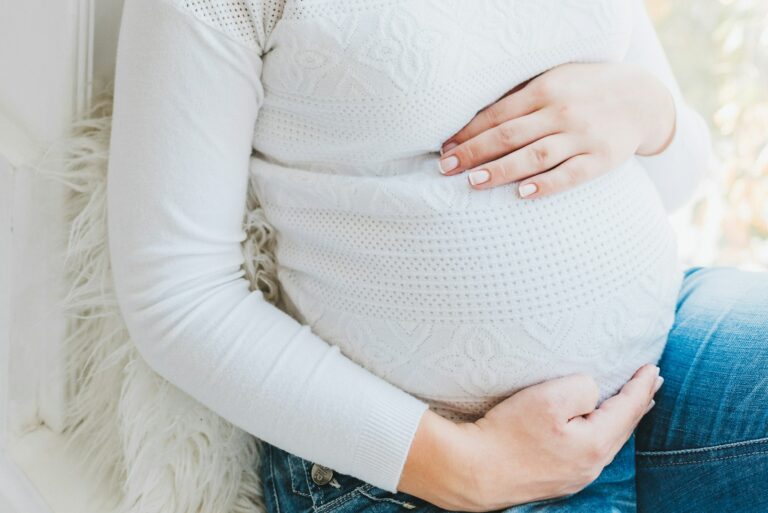For many parents, the return of menses stands out as one of those postpartum milestones that raises as many questions as it answers. Is it normal for it to take months? Should the first periods after birth be heavier, lighter, more painful? Does breastfeeding really delay things significantly—or is that just hearsay? Questions swirl: fertility, hormones, ovulation, contraception… Suddenly, the rhythm you may have known before pregnancy feels unfamiliar again, introducing a fresh uncertainty right in the midst of parenting’s daily demands. The aim here is to demystify the return of menses, untangle the physiological changes shaping this transition, and offer actionable, compassionate support matched to the lived experience of parents. Expect scientific insight, practical guidance, and reassurance: you’ll find what’s happening, why, potential warning signs, and thoughtful strategies for navigating this important stage in your recovery.
Understanding the return of menses
What does the return of menses mean after childbirth?
Picture the return of menses as the body’s natural indicator: healing processes are wrapping up, and regular reproductive rhythms are tiptoeing back in. Following pregnancy and delivery, your uterus is engaged in repair mode—the weeks-long process of lochia, a discharge that may be mistaken for a period but is, in truth, the after-effects of the uterus shedding the last remnants post-birth. Only when hormones such as estrogen and progesterone begin to reassert their regular cycle does real menstrual bleeding make its comeback. The timeline? Profoundly individual. Whether you breastfeed, the state of your health, sensitivity to hormones, and prior cycle patterns all contribute.
One mother might experience her period’s return as a quiet, subtle change—others, as an unmistakable tidal wave. Spotting? Heavy flow? Unexpected cramping? Initial periods after pregnancy can seem unusual; cycles are often erratic, flows unpredictable, pain sharper or longer lasting. The body is recalibrating, readjusting after months of gestational hormone surges and the significant event of delivery.
The milk connection: hormonal suppression and its effects
If you’re breastfeeding, the hormone prolactin—necessary for milk production—delays ovulation by suppressing the release of hormones that stimulate follicle growth in the ovaries. Science supports the observation: exclusive, frequent breastfeeding stretches out the timeline before ovulation and, by extension, before the return of menses. Lower prolactin (when feeds space out or stop) is the signal that wakes the ovarian cycle again. Sometimes, a parent may find the first sign of ovulation comes not with the return of menses but with another, often more surprising result: a positive pregnancy test, months before any bleeding resumes.
Distinguishing between postpartum bleeding and the return of menses
Lochia or period? Unpacking postpartum bleeding
After childbirth, lochia can persist for two to six weeks and is often mistaken for a period. However, lochia is a complex blend: blood, tissue, and mucus, as the uterus sheds the lining that supported your pregnancy. It slowly fades from red to pink, then pale, and usually tapers off entirely before the return of menses. Unlike menstrual bleeding, lochia should never be accompanied by foul odor, fever, or escalating pain. Those warning signs demand immediate medical attention.
Timing the first period: what changes for breastfeeding and non-breastfeeding parents?
For parents who are not breastfeeding, the return of menses typically arrives far sooner—anywhere from four to eight weeks postpartum. Yet nothing about postpartum recovery is wholly predictable; some may see cycles return within a month, others, after several months. When breastfeeding, the effect can be truly dramatic—a year or sometimes even longer without any menstrual cycle is within the range of normal if exclusive breastfeeding is maintained.
But it’s not just feeding that matters. Maternal nutrition, body weight, psychological stress, pre-existing hormonal conditions (think PCOS, thyroid dysfunction, hypothalamic amenorrhea)—they can all impact when the ovaries “wake up” again and send that first ovum downstream.
Intellectual perspective: hormones, fertility, and postpartum contraception
How does contraception influence the return of menses?
Different contraceptive methods have markedly different implications for the return of menses:
- Oral contraceptives may reintroduce a regular, predictable pattern within one to three months, irrespective of whether you are breastfeeding (though not all types are suitable for every postpartum situation).
- Hormonal intrauterine devices (IUDs) or implants can provoke highly variable bleeding, sometimes lighter than normal, sometimes irregular, normalizing over several cycles.
- Injectable contraception can push back the return of menses by many months—even up to a year after the last dose is given.
- Non-hormonal methods (such as copper IUDs or condoms) allow menstrual rhythms to resume unimpeded (although breastfeeding’s hormonal effect will still delay cycles for many).
Fertility before the first period: a well-known paradox
Curiously, ovulation almost always precedes the first observed period. It is not uncommon to conceive before ever seeing that initial postpartum bleed—a biological reality that catches many by surprise. That’s why discussing contraception soon after delivery is a prudent step, especially if your family planning goals don’t include a new pregnancy right away.
Signs and symptoms: what does the return of menses look and feel like?
Physical indicators and changing patterns
You notice heavier bleeding, a different sort of cramp, or a much shorter, lighter flow—what is normal? The return of menses is unique to each individual. Early periods may shift from previous “norms,” ebbing and flowing in intensity, timing, even length. This unpredictability can be disorienting. But it’s part of uterine healing and hormonal recalibration: the uterus is still involuting (shrinking to its pre-pregnancy size), endometrial tissue is regenerating, and ovarian communication with the pituitary is reestablishing itself.
If your period is notably heavy—soaking through a pad every hour for more than two consecutive hours—medical evaluation is warranted. On the other hand, light, irregular bleeding, or periods skipping a few months, is expected, especially for those breastfeeding.
Emotional, cognitive, and psychological changes
Hormonal fluctuations during the return of menses can spark mood swings, fatigue, or irritability—a mirror of premenstrual syndrome (PMS), magnified by new-parent sleep deprivation and physical recovery. You might sense irritability, bursts of sadness, or unexpected mood lability; these are physiological changes, not signs of weakness. If low mood persists, especially if it overshadows daily function, professional support can make a vital difference.
Lifestyle, nutrition, and emotional wellbeing
How do nutrition and activity influence the return of menses?
A balanced diet, adequate hydration, and gentle physical activity are recommended foundations for robust postpartum healing and the smooth resumption of menstrual cycles. Conversely, severe weight loss, low body fat, or extreme exercise can slow hormonal recovery, postponing the return of menses. The medical evidence strongly favors moderation and nourishment—think iron-rich foods (to replenish stores depleted by blood loss), leafy greens, high-quality proteins, and healthy fats.
Coping with stress and mental health challenges
Chronic stress can suppress hormonal communication between the brain and reproductive organs, sometimes as powerfully as medications themselves. Techniques such as mindfulness, connection to supportive loved ones, and scheduled moments for rest can help blunt this impact.
Monitoring, self-care, and medical follow-up
Tracking cycles and noticing irregularities
Tracking your bleeding, symptoms, and emotional states gives a concrete map of your progress, and digital period tracker apps or a paper calendar can offer structure to this process. Ovulation predictor kits (which measure luteinizing hormone surges) are scientific tools to pinpoint when your body’s preparing to ovulate for the first time after birth.
Safeguarding pelvic health and knowing when to seek help
During the early weeks, pads are a better choice than tampons (lower risk of infection). For pain, over-the-counter acetaminophen is widely considered compatible with breastfeeding, but always check before using any medication. If you observe excessive bleeding, clots larger than a coin, or signs of infection (fever, offensive odor, chills), seeking medical review promptly matters.
And if there’s no return of menses after 90 days post-birth (and you’re not breastfeeding), a consultation is advised—it may reveal treatable hormonal or structural issues.
Long-term scenarios: fertility, family planning, and ongoing irregularity
Fertility, birth spacing, and the science of optimal recovery
It’s worth underscoring—the return of menses doesn’t always mean cycles are consistent, nor does it mean fertility is “on hold” until it arrives. Ovulation can and often does precede the first postpartum period, meaning conception is possible at any point. Research supports spacing pregnancies by at least 18 to 24 months; this interval supports maternal tissue healing, reduces health risks, and promotes optimal outcomes for both parent and child.
Cycles may remain erratic for months (sometimes longer for those breastfeeding or if underlying conditions persist). If patterns feel “off,” symptoms are severe, or the lack of regularity is causing concern, professional advice is well worth seeking.
Key takeaways
- The return of menses after childbirth is highly variable, shaped by hormones, breastfeeding, health status, and lifestyle.
- First periods can differ dramatically from what you knew before—expect changes in length, timing, flow, and cramping.
- Breastfeeding extends the timeline to the return of menses for many parents, but ovulation (and thus fertility) may resume earlier than the first visible bleed.
- Contraception should be discussed early: pregnancy can occur before menstruation resumes.
- Watch for uncharacteristic symptoms—excessive bleeding, severe pain, fever, or prolonged absence of periods.
- Emotional shifts around the return of menses are influenced by hormonal changes and parenting stress—support and grace for yourself are key.
- There’s no single “normal” postpartum experience; individual patterns matter more than the calendar.
- Use resources to track, document, and understand your recovery; never hesitate to seek reassurance or guidance from medical professionals.
And for ongoing, personalized support—including free health questionnaires and tailored advice for your child’s health and development—download the Heloa app. Healthcare teams and digital tools are ready to answer your questions and support you at every step.
Questions Parents Ask
How long does it usually take for periods to become regular again after they return?
It’s completely normal for cycles to be irregular for a while after your periods return postpartum. For some, predictability comes back within two to three cycles, while for others, it may take several months. Many factors play a role—such as stress, nutrition, sleep, as well as whether you are breastfeeding. Be patient with your body; every recovery is unique. If irregular bleeding persists or is bothersome, a healthcare professional can offer gentle guidance and support.
Is it normal for the first period after childbirth to be longer or heavier than before?
Yes, it’s quite common for your first few periods after childbirth to last a bit longer or to be heavier than what you were used to before pregnancy. Your uterus is still completing its process of healing and returning to its previous size, so these changes are natural and usually temporary. Try not to worry—these shifts are part of the normal recovery. However, if you experience bleeding that seems excessive or concerns you, don’t hesitate to seek reassurance from your healthcare provider.









